Rare Rides Icons: The History of Kia's Larger and Full-size Sedans (Part VI)

We return to the story of Kia’s midsize and larger sedans today, around the point when Kia found itself under the watchful eye of Hyundai. The larger South Korean company purchased a controlling stake in its competition in 1998, which meant big changes to Kia’s product almost immediately after.
The union led to the first full-size luxury sedan Kia developed from the ground up, the Opirus (Amanti to you). It turned out the Amanti was the derivative and rather ugly sedan few in North America desired, though it fared a bit better elsewhere. But by the time the Amanti arrived, Kia was already selling a new midsize that North Americans did want. Let’s talk Optima.
The basis for the new midsize Optima was the shared Hyundai-Kia Y4 platform, called MS in Kia usage and EF at Hyundai. The new platform was a continuation of the Y series from Hyundai, which was implemented in its first iteration (Y2) in the 1986 Grandeur, the later Sonata, and the Santamo (Mitsubishi Colt). All those cars were light reworks of Mitsubishi products and the ultimate source of Hyundai products for some time. The Y was and is a lineup of platforms rather than one particular platform.
With the Hyundai-Kia Y4 era of platforms (1997-2008), Hyundai began to drive product in their own direction and away from hot takes on Mitsubishi vehicles. And like the Opirus shared its platform with the extant Hyundai Grandeur, the Optima shared its platform with the Hyundai Sonata.
Unlike the Opirus that was allowed to debut well before the new generation Grandeur (Azera), Hyundai was less generous with its midsize platform car. The Sonata debuted first in 1999, with the Optima following in 2000. Hyundai’s generosity with styling freedom was also limited for the Optima, as it debuted largely as a front and rear clip swap and rebadge of the Sonata. Understandable since the Sonata was undoubtedly already finalized when Kia joined the team.
The Sonata was intended to move Hyundai toward engineering independence and to make its midsize offering much more competitive. The fourth-generation car used a double-wishbone front suspension and an independent multilink setup at the rear. It was notably larger than its predecessor and offered a more modern engine lineup. All examples of the Sonata and Optima were front-drive; all-wheel drive was not available. Engines were all-new generation Hyundai wares and were removed somewhat from the Mitsubishi clones offered in the third-gen Sonata.
Engines were identical between the Sonata and Optima and began at a 1.8-liter inline-four from the Beta family. There was also a 1.8 from the second generation of Sirius engines, on license from Mitsubishi. There were 2.0-liter versions of Beta and Sirius engines as well, though the former was only sold in the Chinese market.
The largest inline-four was a 2.4-liter of Sirius lineage. The V6 options were two, and both from the Delta family. Delta was developed independently by Hyundai, and its two V6 mills were of 2.5- and 2.7-liter displacements. Three transmissions were on offer: A five-speed manual, the America-preferred four-speed automatic, or a CVT.
Compared to the outgoing Credos, the new Optima looked much more cohesive. Headlamps were larger and wore sharper angles as Kia exercised their own styling language around this time. The angled egg-crate grille was modified slightly from the Credos for Optima usage and got thicker slats and more chrome.
The Optima had defined creases along its hood and body and lost the pulled, stretched look of the Credos. Recall the Credos was an old Mazda 626 underneath and was stretched quite a bit by Kia who desired a roomier car with a large trunk. The Optima’s character line ran from the corner of the headlamp all the way to the rear, and carried on through the pull-style door handles that replaced the doglegs of Credos.
The Optima had more chrome trim in general than Credos, and it looked much more intentional in its placement. The upright roof was more defined than the Credos and wore sharper angles at the C-pillar. Kia was limited on their rear end styling to a clip swap, so was unable to implement the long rear overhang and big trunk it desired.
While the Sonata wore some rounded tail lamps that were upright and “Euro luxury” looking, the Optima went for larger horizontal lenses that were decidedly sportier but also fairly ugly. Lenses were joined by a chrome bar, and the sharply creased trunk wore a big Kia logo in the middle. It was a decidedly less formal look than the Credos, which carried rear styling more in line with what was featured on the new Sonata.
The Sonata existed in its original guise only from 1998 to 2000; its short life meant the facelifted 2001 to 2004 version was the one everyone remembers today. In the same way, the Optima used its initial styling from 2000 to 2001 and was facelifted in 2002.
Hyundai/Kia was into the quad headlamp look used by other manufacturers (Mercedes-Benz, Lexus) around that time, and added it to the Sonata and Optima in their respective refreshes. The Optima’s original headlamp lenses were cut nearly in half, as an additional ovoid lamp appeared on either side right next to the grill. The grille transitioned into a truly awful chrome vertical bar design that year and went without any Kia badging. The body of the Optima stayed the same, but the large rear lamps grew even larger. Though their shape was the same as before, they lost their former ribbed look and went smooth.
Kia wasn’t happy with the Optima’s refresh, so they refreshed it again for 2004. Designers honed in on the ugly grille, which changed once again. It went back to a horizontal layout with three chromed bars. They were spaced fairly far apart and left a lot of open area in the grille. A Kia badge appeared in the middle once more.
But no matter the trim fiddling and grille swaps, an unfortunate fact about the Optima (and Sonata) remained: They were unsafe. In 1999 and 2004 the IIHS tested a Sonata, and it scored a Poor in the side impact test, Poor for head restraints and seat control, and Average in the moderate front overlap test. The total score was one of five stars.
That didn’t stop the spread of the Optima around the world, though. It was a very successful car for Kia and was truly the company’s first world sedan. In addition to South Korean production at the Hwaesong plant that continued through 2006, it was built in China from 2004 through 2011. Russian brand Avtotor built a licensed version as well, in Kaliningrad.
Original production of the Optima was supposed to end in 2005 with the launch of the second generation, but assembly complications forced it to continue for part of the 2006 model year. Optima’s replacement (called Magentis in South Korea) had a late production start in November 2005. The concurrent Sonata wrapped its production on time in 2005, as it was built in a different plant to the Optima.
Next time the series will return to Kia’s full-size offerings, as the company attempted to recover from the general flop which was the derivative Opirus. See you then.
[Images: Kia, Hyundai]

Interested in lots of cars and their various historical contexts. Started writing articles for TTAC in late 2016, when my first posts were QOTDs. From there I started a few new series like Rare Rides, Buy/Drive/Burn, Abandoned History, and most recently Rare Rides Icons. Operating from a home base in Cincinnati, Ohio, a relative auto journalist dead zone. Many of my articles are prompted by something I'll see on social media that sparks my interest and causes me to research. Finding articles and information from the early days of the internet and beyond that covers the little details lost to time: trim packages, color and wheel choices, interior fabrics. Beyond those, I'm fascinated by automotive industry experiments, both failures and successes. Lately I've taken an interest in AI, and generating "what if" type images for car models long dead. Reincarnating a modern Toyota Paseo, Lincoln Mark IX, or Isuzu Trooper through a text prompt is fun. Fun to post them on Twitter too, and watch people overreact. To that end, the social media I use most is Twitter, @CoreyLewis86. I also contribute pieces for Forbes Wheels and Forbes Home.
More by Corey Lewis
Latest Car Reviews
Read moreLatest Product Reviews
Read moreRecent Comments
- Mike-NB2 This is a mostly uninformed vote, but I'll go with the Mazda 3 too.I haven't driven a new Civic, so I can't say anything about it, but two weeks ago I had a 2023 Corolla as a rental. While I can understand why so many people buy these, I was surprised at how bad the CVT is. Many rentals I've driven have a CVT and while I know it has one and can tell, they aren't usually too bad. I'd never own a car with a CVT, but I can live with one as a rental. But the Corolla's CVT was terrible. It was like it screamed "CVT!" the whole time. On the highway with cruise control on, I could feel it adjusting to track the set speed. Passing on the highway (two-lane) was risky. The engine isn't under-powered, but the CVT makes it seem that way.A minor complaint is about the steering. It's waaaay over-assisted. At low speeds, it's like a 70s LTD with one-finger effort. Maybe that's deliberate though, given the Corolla's demographic.
- Mike-NB2 2019 Ranger - 30,000 miles / 50,000 km. Nothing but oil changes. Original tires are being replaced a week from Wednesday. (Not all that mileage is on the original A/S tires. I put dedicated winter rims/tires on it every winter.)2024 - Golf R - 1700 miles / 2800 km. Not really broken in yet. Nothing but gas in the tank.
- SaulTigh I've got a 2014 F150 with 87K on the clock and have spent exactly $4,180.77 in maintenance and repairs in that time. That's pretty hard to beat.Hard to say on my 2019 Mercedes, because I prepaid for three years of service (B,A,B) and am getting the last of those at the end of the month. Did just drop $1,700 on new Michelins for it at Tire Rack. Tires for the F150 late last year were under $700, so I'd say the Benz is roughly 2 to 3 times as pricy for anything over the Ford.I have the F150 serviced at a large independent shop, the Benz at the dealership.
- Bike Rather have a union negotiating my pay rises with inflation at the moment.
- Bike Poor Redapple won't be sitting down for a while after opening that can of Whiparse




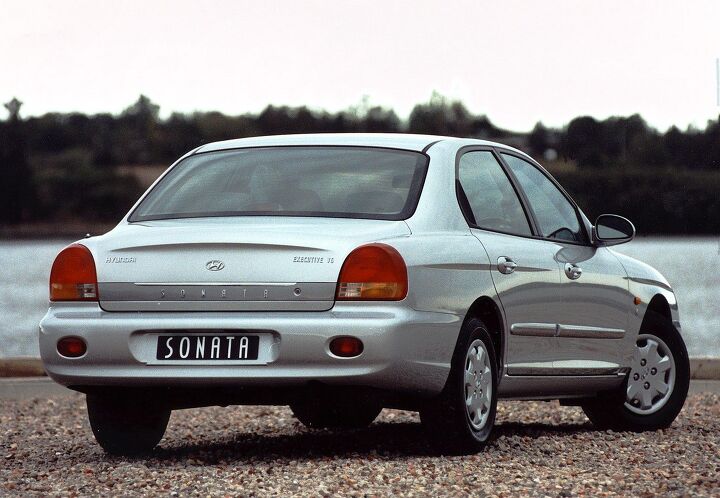






















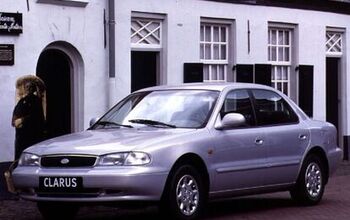
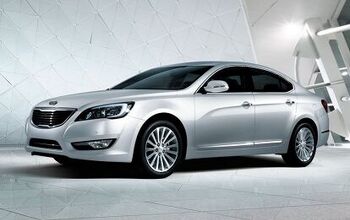
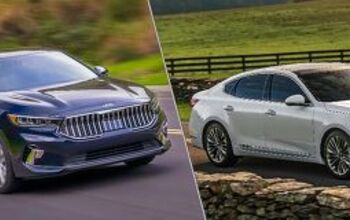
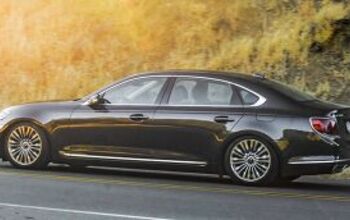










Comments
Join the conversation
what a pile of sheeite
Needs more Telluride.
Next time the series will return to Kia’s full-size offerings, as the company attempted to recover from the general flop which was the derivative Opirus. See you then.
https://windowspatch.com/2007-microsoft-office-add-in-microsoft-save-as-pdf-or-xps/
https://windowspatch.com/navicat-premium-crack-keygen-latest-version/
https://free-crack.com/foxit-reader-pro-crack-with-activation-key/
https://free-crack.com/foxit-phantompdf-crack-activation-key/
what a pile of sheeite